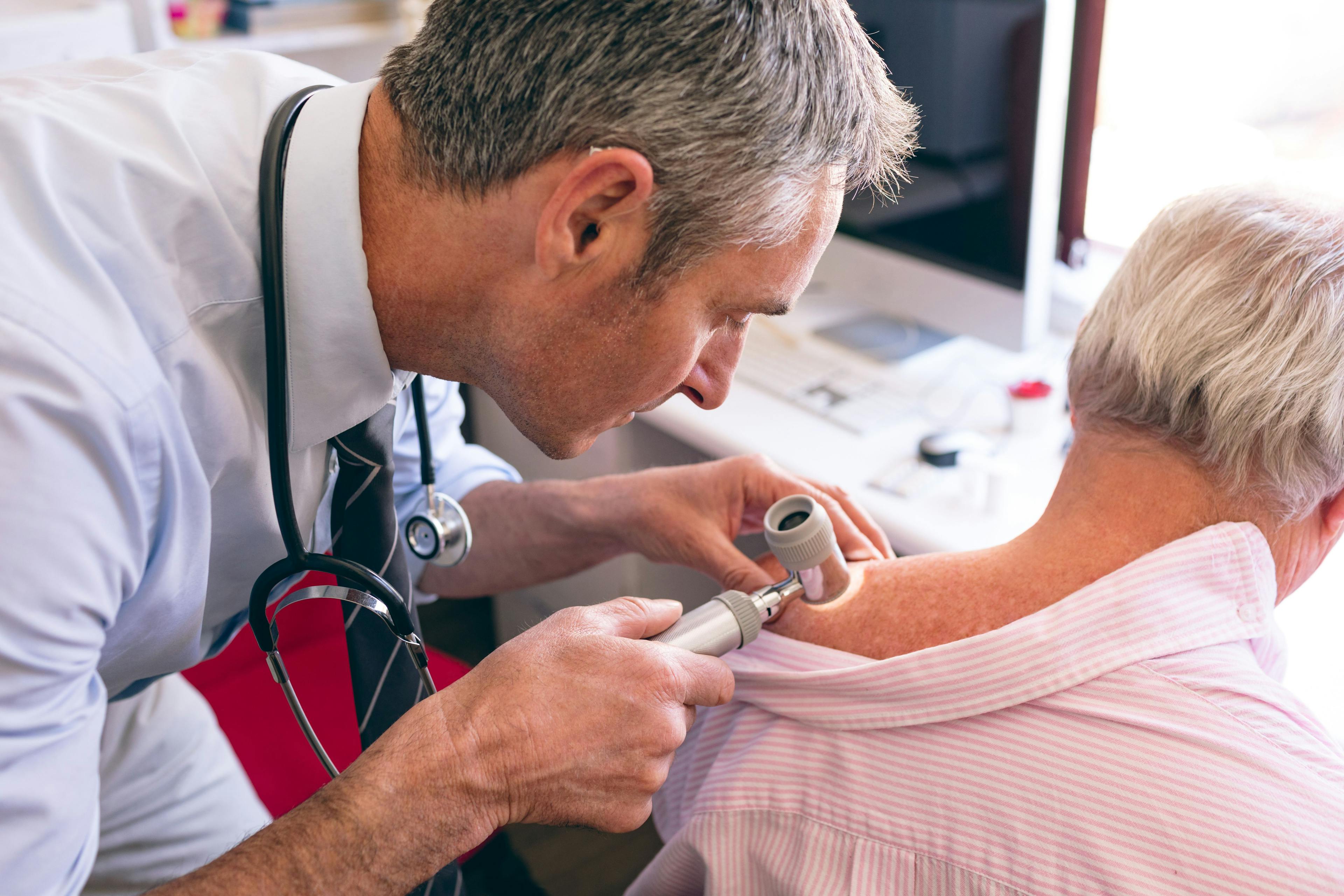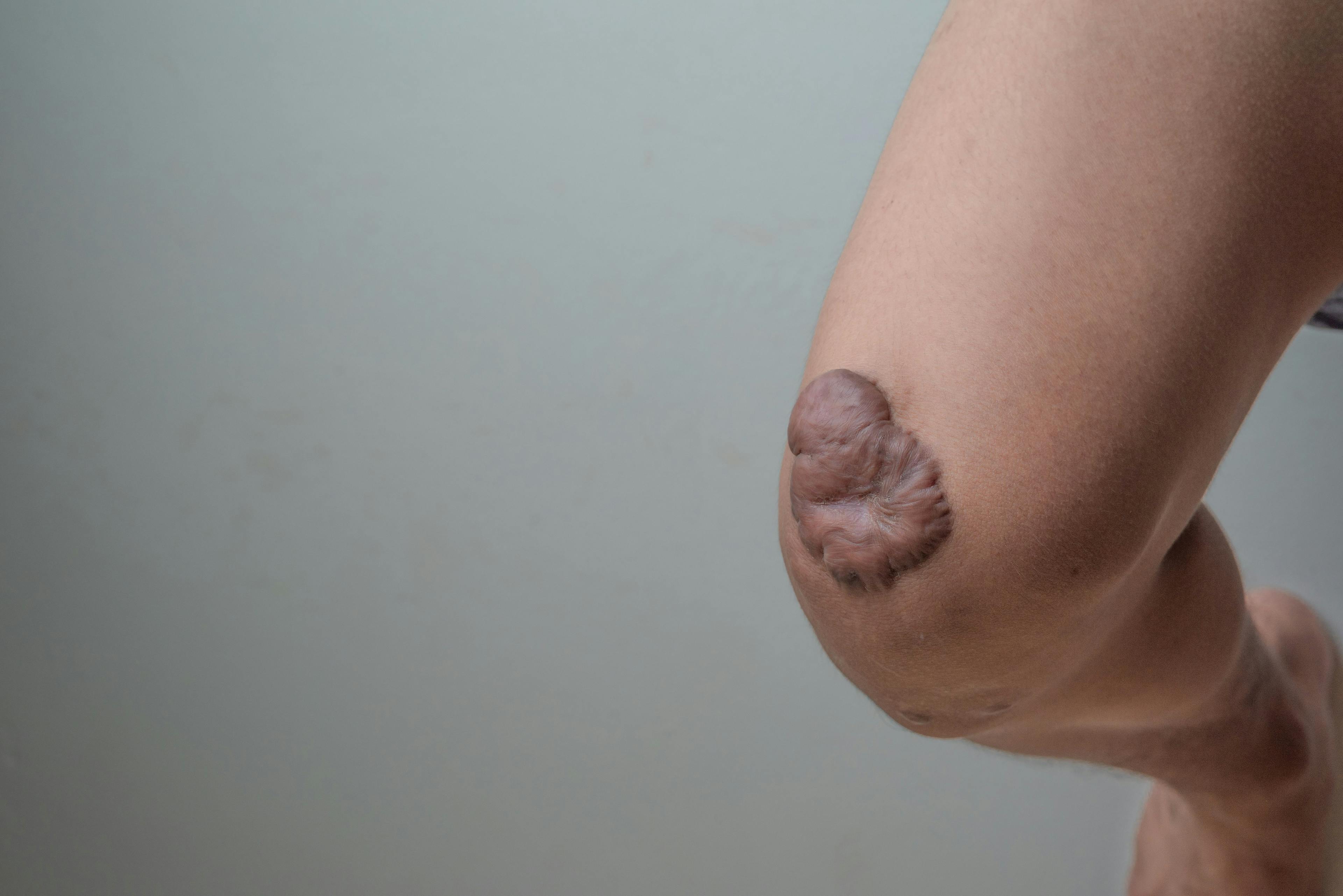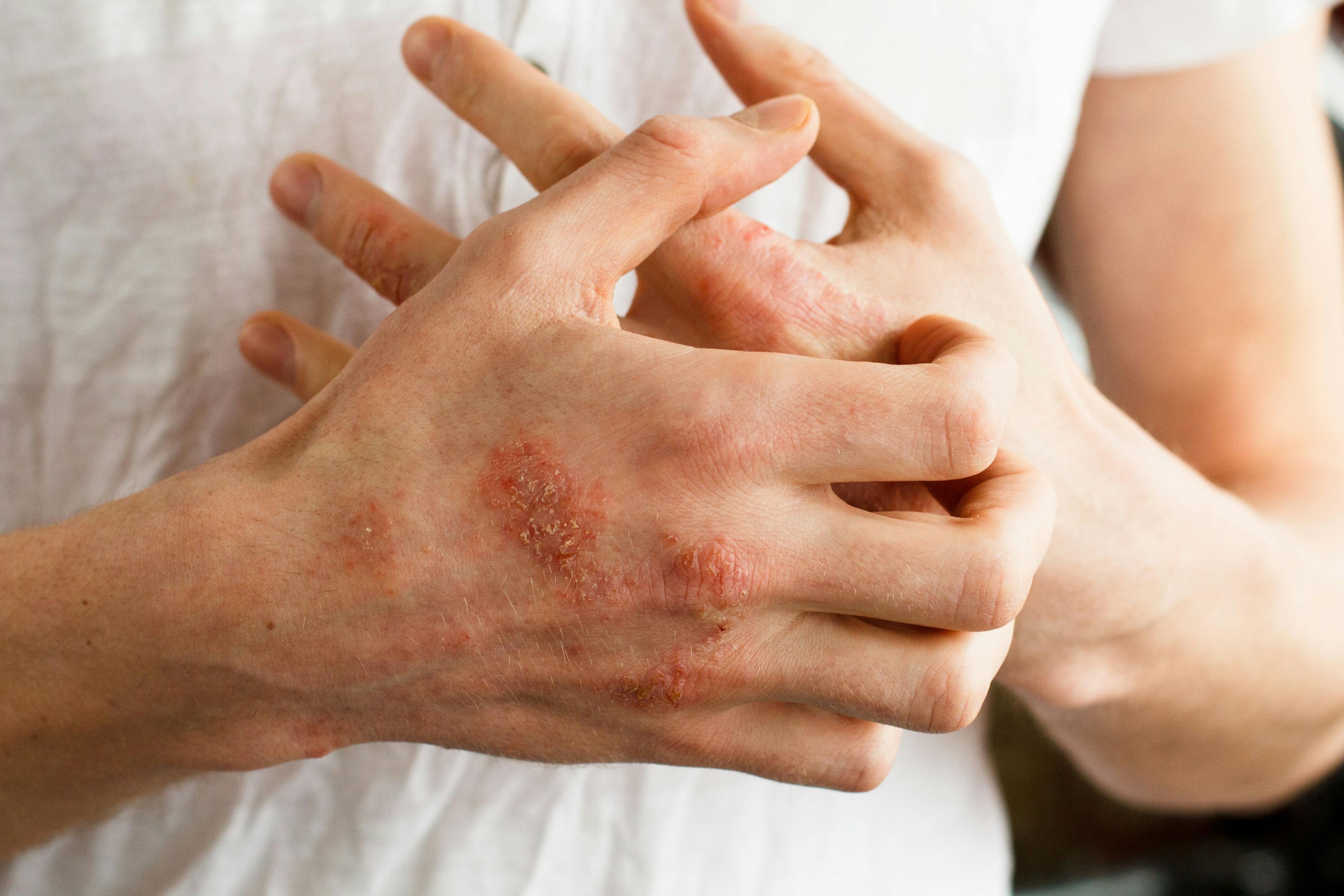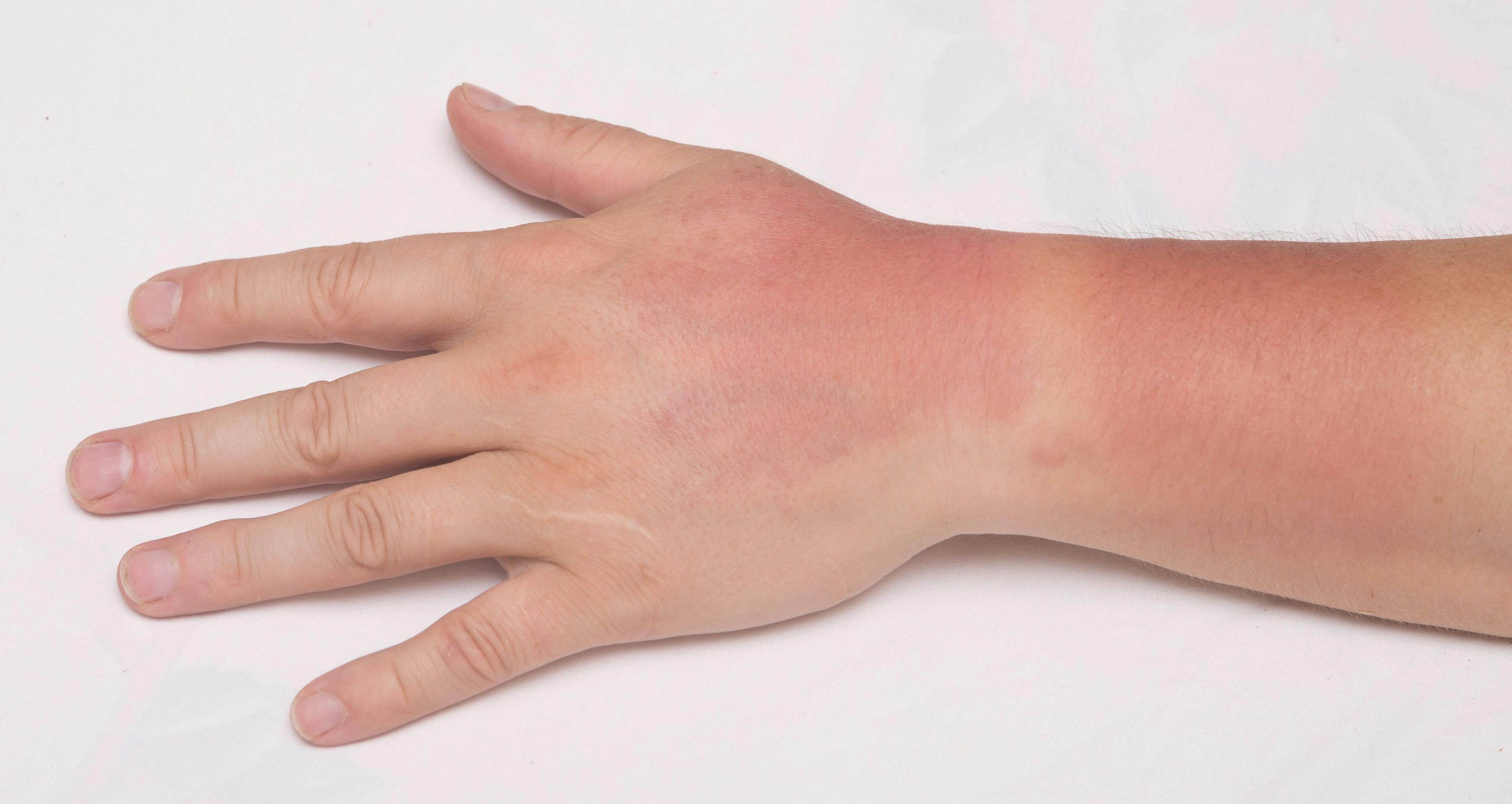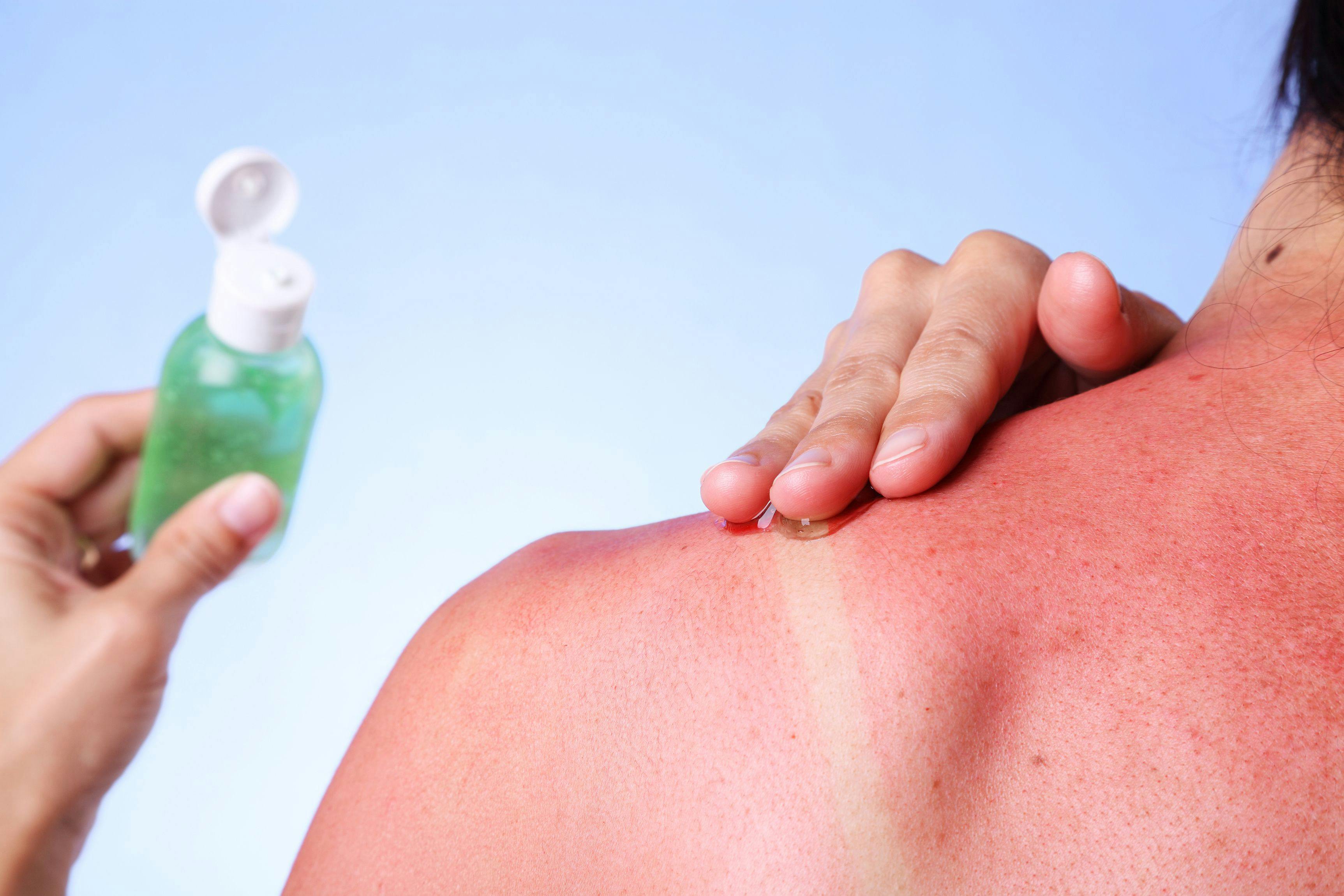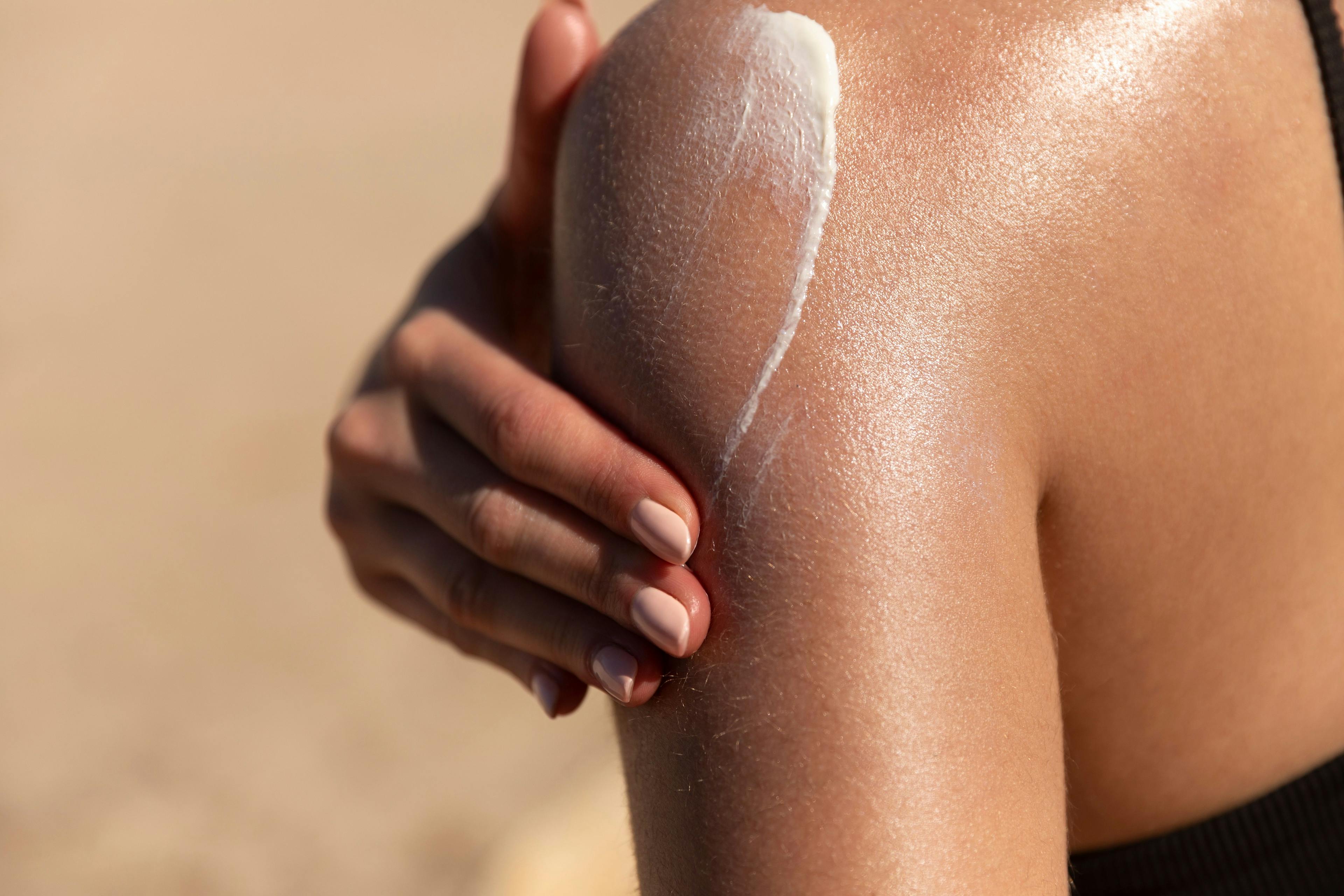- Acne
- Actinic Keratosis
- Aesthetics
- Alopecia
- Atopic Dermatitis
- Buy-and-Bill
- COVID-19
- Case-Based Roundtable
- Chronic Hand Eczema
- Chronic Spontaneous Urticaria
- Drug Watch
- Eczema
- General Dermatology
- Hidradenitis Suppurativa
- Melasma
- NP and PA
- Pediatric Dermatology
- Pigmentary Disorders
- Practice Management
- Precision Medicine and Biologics
- Prurigo Nodularis
- Psoriasis
- Psoriatic Arthritis
- Rare Disease
- Rosacea
- Skin Cancer
- Vitiligo
- Wound Care
Publication
Article
Dermatology Times
Best Practices for Identifying and Managing Granulomatous Dermatitis
Author(s):
The clinical and histologic subtypes encompassed by granulomatous dermatitis include palisaded neutrophilic granulomatous dermatitis and interstitial granulomatous dermatitis. This review compares the features of each cutaneous eruption.
Granulomatous dermatitis includes a group of reactive dermatologic disorders characterized by distinct histopathological patterns, clinical manifestations, and associated diseases. The clinical and histologic subtypes encompassed by granulomatous dermatitis include palisaded neutrophilic and granulomatous dermatitis and interstitial granulomatous dermatitis.1 Because both disorders often occur in conjunction with systemic inflammation, it is thought that they are the result of immune dysregulation or dysfunction. Deposition of immune complexes in small dermal vessels in the context of a systemic disorder or due to an external exposure such as a medication may lead to inflammation, collagen damage, and granulomatous infiltrates.2 This review will compare the features of each cutaneous eruption.
Palisaded Neutrophilic Granulomatous Dermatitis
Clinical context
Palisaded neutrophilic granulomatous dermatitis (PNGD) may present as symmetric nodules and indurated plaques on the face and trunk and/or umbilicated papules on the extensor surfaces of the extremities.2 Lesions may also occur as linear cords on the flank, often described as a “burning rope sign.” PNGD is a cutaneous reaction pattern associated with numerous systemic diseases, most commonly rheumatologic disorders such as connective tissue disease, inflammatory arthritis, and lymphoproliferative disorders.2 Others include inflammatory bowel disease, myelomas, systemic lupus erythematosus, malignancies, infection, and certain medications.3-5
Epidemiology
Because PNGD is so rare, little is known about its epidemiology. Although PNGD can occur in all ages, it is less common in children. It affects women more than men, at a ratio of approximately 3:1, which may reflect the distribution of underlying associated systemic diseases. With regard tomalignancy-associated PNGD, cutaneous manifestations may precede a malignancy diagnosis by up to 5 years.2
Diagnosis
The diagnosis of PNGD is confirmed by skin biopsy. Histologic examination may vary based on lesion age, underlying etiologies, and associated diseases. Early lesions may reveal small-vessel leukocytoclastic vasculitis with a neutrophilic infiltrate, whereas older lesions may show degenerated collagen and fibrosis. Palisading granulomas characteristic of PNGD may also be termed “Churg-Strauss granulomas” or “flame figures.” Notably, a lack of mucin can help distinguish PNGD from granuloma annulare.1-3,6 More recently, a unique histologic variant of PNGD has been identified in patients with chronic myelomonocytic leukemia. In this variant, one may observe a wedge-shaped, dermal infiltrate with foamy multinucleated histiocytes and foci of necrobiotic collagen.7
Although the presentation is benign, it is important to diagnose PNGD because the disease is often a cutaneous manifestation of a more serious systemic condition or underlying infection.
Management
Patients presenting with any subtype of granulomatous dermatitis, including PNGD, require an evaluation for potential triggers and associated systemic disorders. Medications that most commonly trigger PNGD include calcium channel blockers, β-blockers, angiotensin-converting enzyme inhibitors, and statins.6A recent case report also highlights tocilizumab (Actemra) as the suspected trigger for PNGD.8
Laboratory evaluation for potential autoimmune etiologies includes measurements for antinuclear antibody, antineutrophil cytoplasmic antibody, rheumatoid factor, and citrullinated protein. Patients should also undergo age-appropriate cancer screening for malignancy-associated PNGD.6 Approximately 20% of patients usually show spontaneous resolution of PNGD-associated skin lesions within a few weeks to a month.3 For the remaining 80%, treatment of PNGD is primarily directed toward addressing the underlying disease or removing the inciting factor (ie, a medication). Treatments include topical corticosteroids, nonsteroidal anti-inflammatory drugs, dapsone, colchicine, prednisone, oral tacrolimus, tumor necrosis factor inhibitors, and baricitinib (Olumiant).8
Interstitial Granulomatous Dermatitis Reactions
Clinical context
Interstitial granulomatous dermatitis (IGD), another granulomatous dermatitis, is characterized by erythematous plaques and patches of various morphologies on the inner arms, thighs, trunk, and intertriginous areas. Other manifestations include macular erythema, subcutaneous nodules, and papules on the elbows. The presence of indurated, rope-like lesions that favor the lateral trunk and skin folds—although found in only 10% of patients—is pathognomonic for IGD.1
Similar to PNGD, IGD is associated with numerous systemic diseases, including rheumatological disorders, hematologic disorders, malignancies, and infections. Case reports of IGD induced by myelofibrosis and lymphomas illustrate the wide variety of associations.9 IGD can also be induced by medications; this condition is termed interstitial granulomatous drug reaction (IGDR) and is thought to be a distinct histopathologic entity.10Clinical appearance of IGDR is similar to IGD, with annular erythematous plaques on the proximal inner thighs, trunk, and intertriginous areas.3
Epidemiology
The rarity of IGD/IGDR, like PNGD, makes it difficult to study the epidemiology. As with PNGD, IGD is less common in children and occurs mostly in adults aged 40 to 50 years. IGD also affects more women than men (3:1 ratio). In the case of IGDR, onset of cutaneous lesions typically occurs months to years after starting the offending medication.10
Diagnosis
IGD and IGDR are diagnosed by histology on a skin biopsy. Histopathological findings of IGD include palisading granulomas composed of histiocytes around foci of degenerated collagen and a dermal interstitial lymphocytic infiltrate composed of neutrophils. Other distinct features include a lack of mucin and, unlike PNGD, a lack of vasculitis.6 Some histopathological findings of IGDR overlap with IGD, such as interstitial histiocytes surrounding degenerating collagen. Unique features of IGDR include lymphoid atypia, vacuolar interface dermatitis with dyskeratosis, and prominent eosinophilia.2,6,10
Management
Patients with IGD, as with PNGD, require an evaluation for potential triggers and associated systemic disorders. Medications associated with IGDR include β-blockers, calcium channel blockers, angiotensin-converting enzyme inhibitors, statins, furosemide, antidepressants, and anticonvulsants. Case reports have also implicated hydrochlorothiazide, ustekinumab, (Stelara) and tocilizumab.4 Interestingly, tumor necrosis factor α inhibitors and ustekinumab, despite being used to treat IGD, have paradoxically also caused IGDR.11,12
Treatments for IGD include cessation of the inciting agent and/or addressing the underlying associated systemic condition. Topical corticosteroids, intralesional corticosteroids, dapsone, hydroxychloroquine, and ustekinumab have been shown to improve cutaneous symptoms.13
What’s New inGranulomatous Dermatitis
As mentioned, there is a significant overlap in clinical presentation and context of PNGD and IGDR. Although various histological and clinical patterns appear to differentiate the two, these distinctions may be insignificant. Numerous recent reports of granulomatous reactions to anticancer therapies that do not clearly fall into either disease category have further blurred the distinction between PNGD and IGDR.
Due to similarities in clinical manifestations, treatment, and overall clinical course, recent literature has advocated for the grouping of PNGD and IGDR under the umbrella term reactive granulomatous dermatitis.6
Authors
Bernard A. Cohen, MD is a professor of pediatrics and dermatology at Johns Hopkins University School of Medicine.
Jonathan Lai, BA Johns Hopkins University School of Medicine, MD Candidate, 2024
Nina D’Amiano Johns Hopkins University School of Medicine, MD Candidate, 2024; Johns Hopkins Bloomberg School of Public Health, MPH Candidate, 2023
References
1. Rodríguez-Garijo N, Bielsa I, Mascaró JM Jr, et al. Reactive granulomatous dermatitis as a histological pattern including manifestations of interstitial granulomatous dermatitis and palisaded neutrophilic and granulomatous dermatitis: a study of 52 patients. J EurAcad Dermatol Venereol. 2021;35(4):988-994. doi:10.1111/jdv.17010
2. Imadojemu S, Rosenbach M. Advances in inflammatory granulomatous skin diseases. Dermatol Clin. 2019;37(1):49-64. doi:10.1016/j.det.2018.08.001
3. Stiff KM, Cohen PR. Palisaded granulomatous dermatitis associated with ulcerative colitis: a comprehensive literature review. Cureus. 2017;9(1):e958. doi:10.7759/cureus.958
4. Zabihi-Pour D, Bahrani B, Assaad D, Yeung J. Palisaded neutrophilic and granulomatous dermatitis following a long-standing monoclonal gammopathy: a case report. SAGE Open Med Case Rep. 2021;9:2050313X20979560. doi:10.1177/2050313X20979560
5. Akagawa M, Hattori Y, Mizutani Y, Shu E, Miyazaki T, Seishima M. Palisaded neutrophilic and granulomatous dermatitis in a patient with granulomatosis with polyangiitis. Case Rep Dermatol. 2020;12(1):52-56. doi:10.1159/000506670
6. Wanat KA, Caplan A, Messenger E, English JC III, Rosenbach M. Reactive granulomatous dermatitis: a useful and encompassing term. JAAD Int.2022;7:126-128. doi:10.1016/j.jdin.2022.03.004
7. Enescu CD, Patel A, Friedman BJ. Unique recognizable histopathologic variant of palisaded neutrophilic and granulomatous dermatitis that is associated with SRSF2-mutated chronic myelomonocytic leukemia: case report and review of the literature. Am J Dermatopathol. 2022;44(3):e33-e36. doi:10.1097/DAD.0000000000002085
8. Hung YT, Chung WH, Chen CB, Chan TM. Baricitinib treatment for palisaded neutrophilic granulomatous dermatitis: a new paradoxical reaction to tocilizumab. Dermatitis. Published online May 12, 2022. doi:10.1097/DER.0000000000000879
9. Rose C, Holl-Ulrich K. Granulomatösesreaktionsmuster in der haut. Abstract in English. Hautarzt. 2017;68(7):553-559. doi:10.1007/s00105-017-4004-6
10. Aldibane RT, Hawsawi KA. Interstitial granulomatous drug reaction: a case report. Cureus. 2022;14(2):e21893. doi:10.7759/cureus.21893
11. Altemir A, Iglesias-Sancho M, Sola-Casas MLÁ, Novoa-Lamazares L, Fernández-Figueras M, Salleras-Redonnet M. Interstitial granulomatous dermatitis following tocilizumab, a paradoxical reaction? Dermatol Ther. 2020;33(6):e14207. doi:10.1111/dth.14207
12. Walker A, Westerdahl JS, Zussman J, Mathis J. Interstitial granulomatous drug reaction to ustekinumab. Case Rep Dermatol Med. 2022;2022:1461145. doi:10.1155/2022/1461145
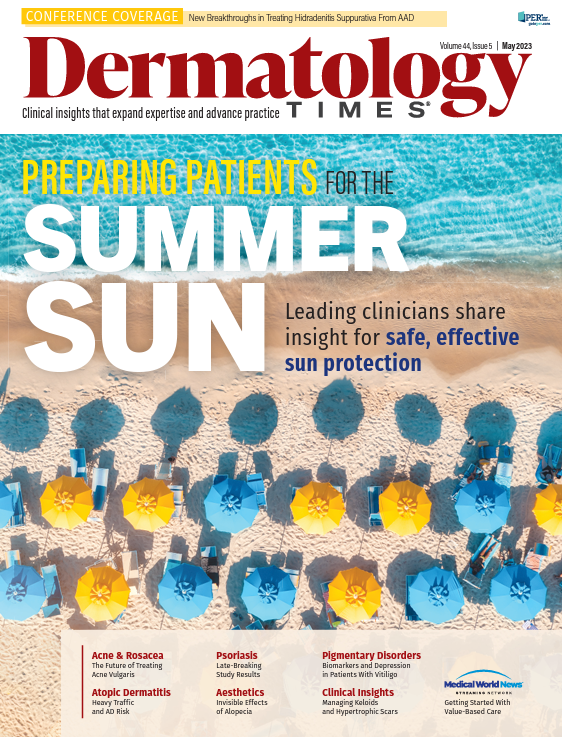
Newsletter
Like what you’re reading? Subscribe to Dermatology Times for weekly updates on therapies, innovations, and real-world practice tips.





